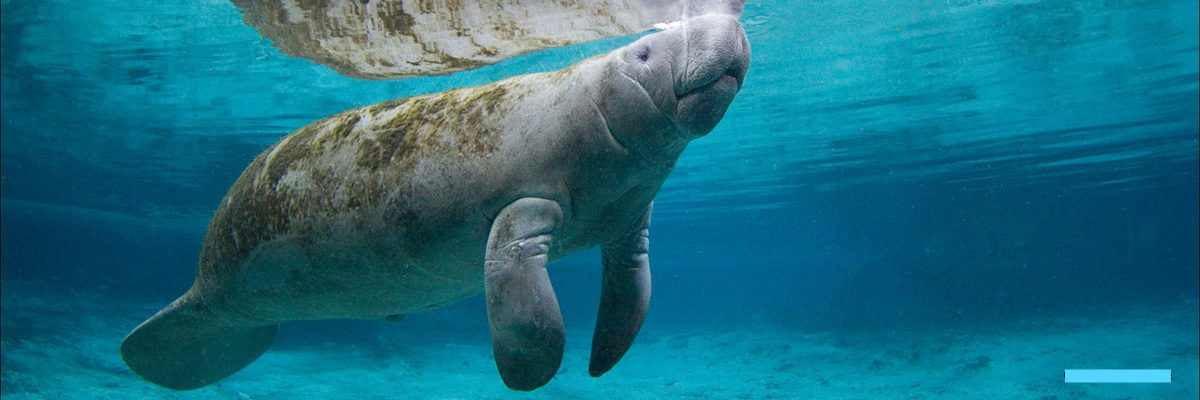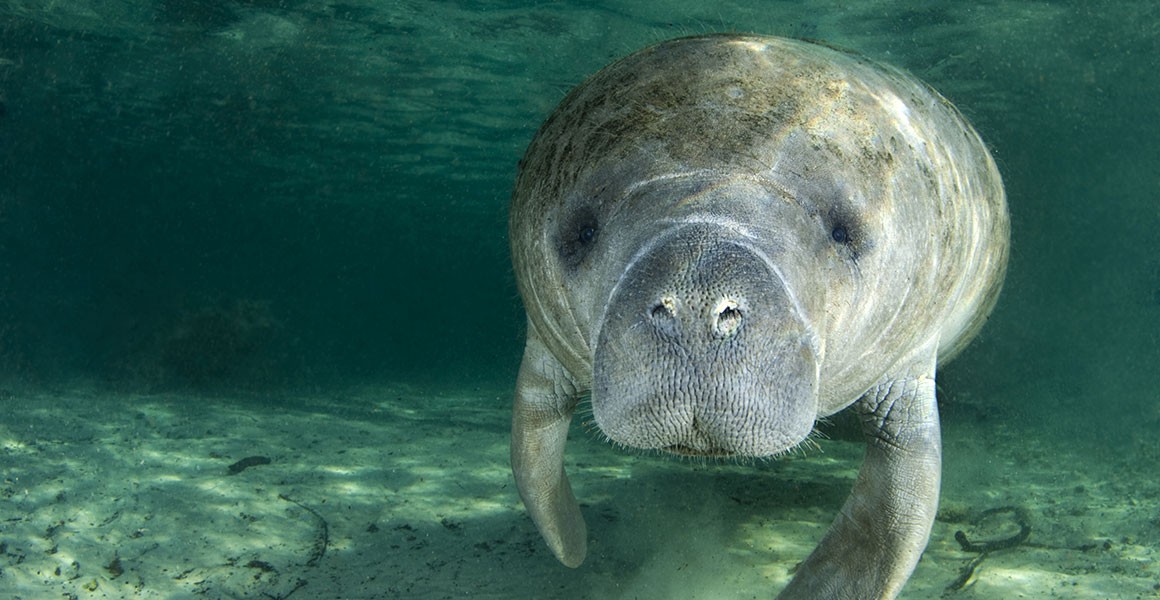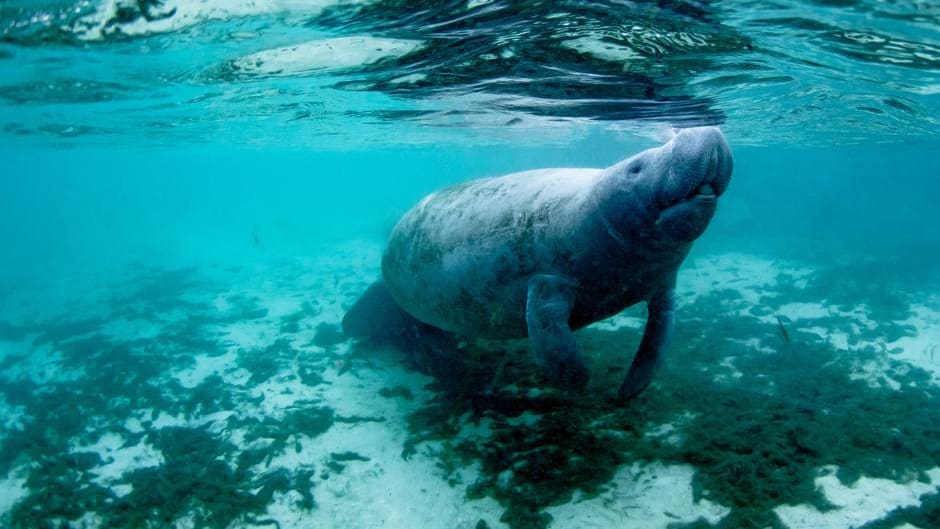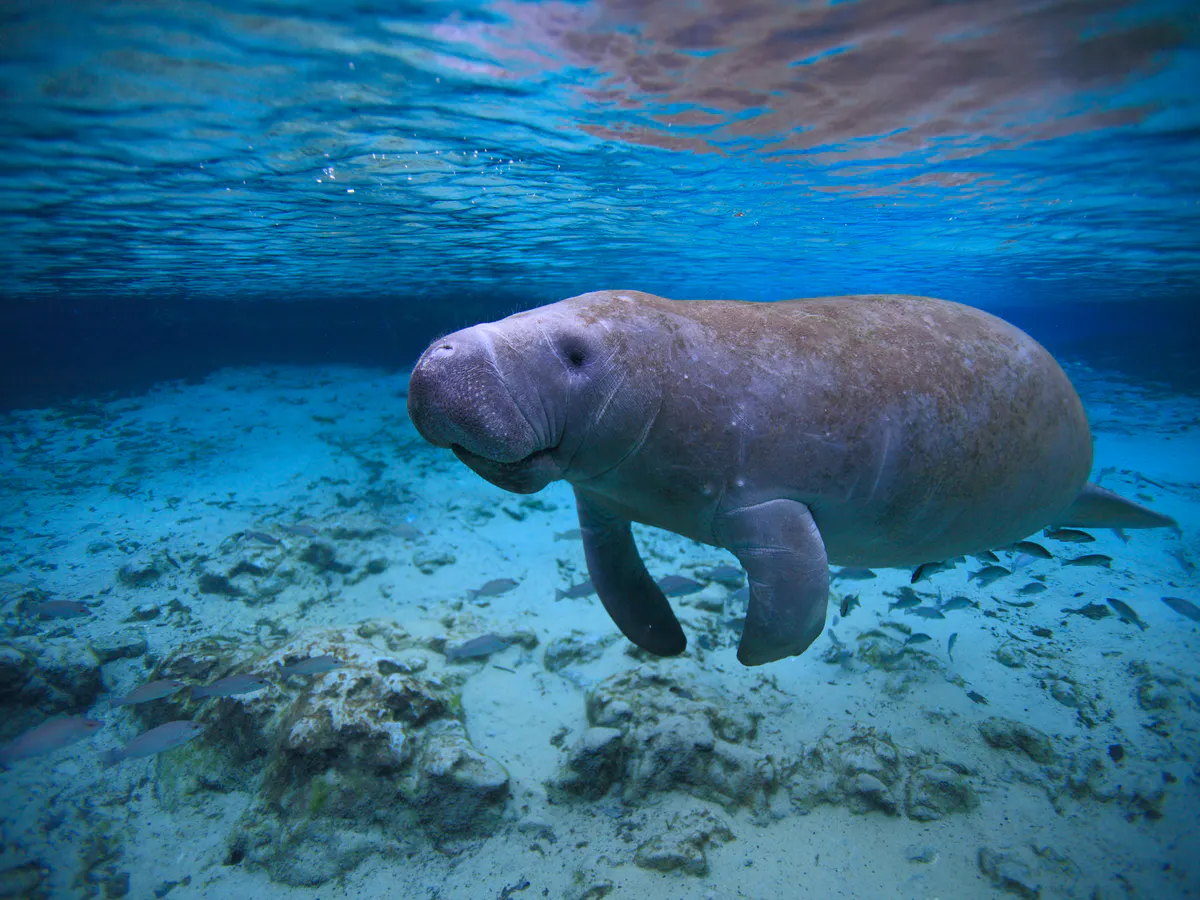STATUS
Critically Endangered


Manatees are large aquatic mammals, and sometimes they're referred to as "sea cows." They're very large averaging 10 feet long and 1,200 pounds! But don't let their size fool you: manatees are actually incredibly graceful creatures. They also play an important role in maintaining a healthy ecosystem.
Manatees eat a LOT of sea grass. By doing so, they keep the grass short, which helps maintain the health of the sea grass beds. While manatees don't have any true natural predators, they have still become endangered.
There are three manatee species worldwide - West Indian, West African, and Amazonian. All three are listed as vulnerable to extinction. So what has caused manatees to become endangered? There are two major threats: loss of habitat and collisions with boats and ships.
As new developments are built along waterways, natural nesting areas are destroyed. Sewage, manure, and fertilizer run-off enters the water and causes algal blooms. Some of this algae is toxic and can kill manatees if they eat it.
Because manatees feed on sea grass, and sea grass needs sunlight and shallow water to grow, manatees spend most of their time in shallow water. This often leaves them with little room to dive away from oncoming boats, which can lead to deadly collisions.

STATUS
Critically Endangered

SCIENTIFIC NAME
Spheniscus demersus

POPULATION
less than 13,000 left

LENGTH
8 to 13 feet (2.4 to 4 meters)

WEIGHT
27 to 590 kilograms

HABITAT
UNDERWATER
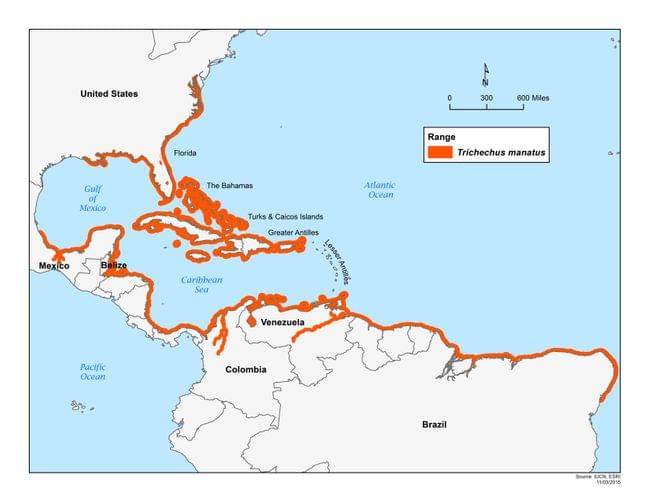
Manatees can help prevent vegetation from becoming overgrown and they consume water hyacinth and other invasive species, improving the health of the ecosystem. Manatees are also important sources of fertilization for sea grasses and other submerged aquatic vegetation
Manatees are herbivores, meaning they consume only vegetation. Their role in the ecosystem is as a plant eater, as they feast on over 60 species of water vegetation in the waters they live in.
Manatees can weigh more than a thousand pounds and have been commonly been known to eat as much as 15 percent of their own body weight in plants each day. Manatees are the watery equivalent of deer, spending many of their waking hours grazing.
Manatees have very few natural predators in their ecosystem. Sharks, alligators, crocodiles and killer whales are the only creatures large enough to handle a manatee, but attacks on them by these predators are rare. They are large enough to be left alone by just about every other animal they encounter except for man.
Manatees are long-lived animals if they are allowed to be. One manatee in a Florida aquarium was born in the late 1940s and is over 60 years old. Manatees do not tolerate cold water or weather and confine themselves to warmer waters.
